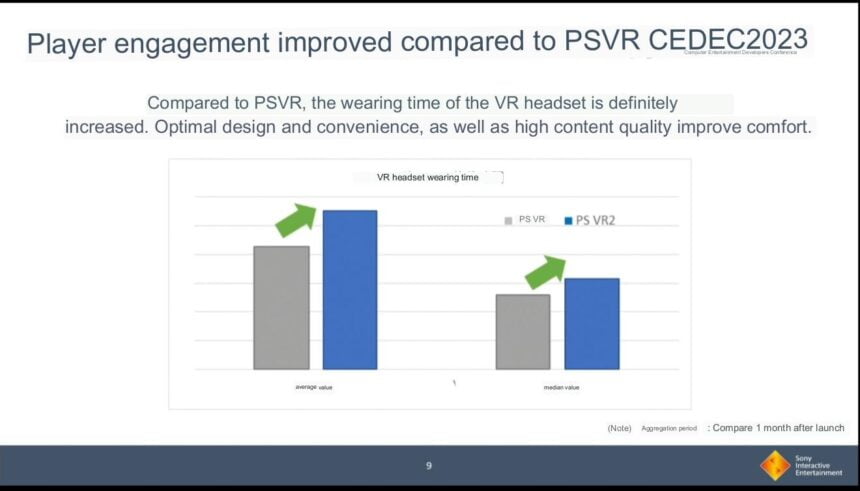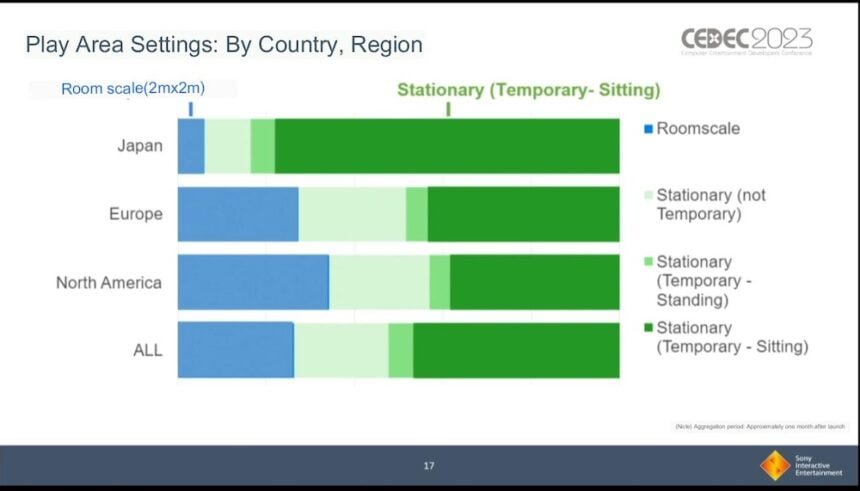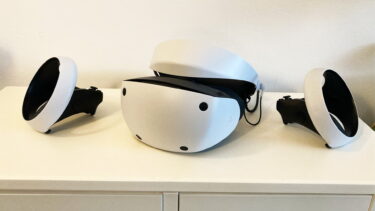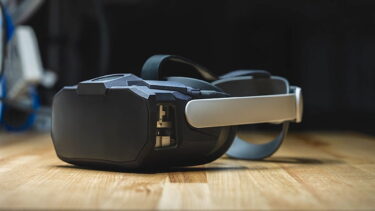During a presentation, a Sony manager gave an interesting insight into the use of the Playstation VR 2.
The talk was given by Kensei Akiyama on August 25th at the Japanese computer entertainment conference CEDEC. Akiyama is the GM of Sony Interactive Entertainment Tokyo Global Developer Technology Department.
His presentation was titled “A Review of PlayStation 5 Development” and covered the use of PlayStation VR 2 among other interesting topics, as 4Gamer reported and Resetera translated to English (check the sources at the bottom of this article).
PSVR 2: More engagement due to easier use
The engagement is said to be improved over the first Playstation VR. However, the data is limited to Japan and the launch month of the Playstation VR 2. According to Sony’s chart, users have been wearing the VR headset significantly longer (average and median value) compared to Playstation VR’s launch month.

Akiyama attributes the increased engagement to three factors: a lighter and more comfortable design, a passthrough mode that allows you to see your surroundings and ease of use and setup due to fewer cables.
PSVR 2 is also ahead in terms of sales figures. At least for the first six weeks after launch. According to Sony, 600,000 units were sold in this period, more than the PSVR 1 sold in the same respective period. In total, Sony sold more than 5 million units of the PSVR 1. A number that PSVR 2 will have to compete with.
Japanese almost only play sitting down
A second chart shows how the customers use the Playstation VR 2: roomscale (playing in an area of at least 2 by 2 meters), standing, or sitting.
Unlike its predecessor, roomscale VR experiences are no longer a problem because Playstation VR 2 has the necessary sensors built into the headset. The first Playstation VR used an external camera with a limited field of view that would lose track of players if they moved too much.

Interestingly, most Japanese still play sitting down, which may be due to cultural reasons or limited space in urban areas. In any case, only a minority actively moves around the room.
In Europe and North America, the situation is different. These users are much more physically active. Sony will therefore do well to actively continue to support all modes of VR gaming.
Source: Mixed News





